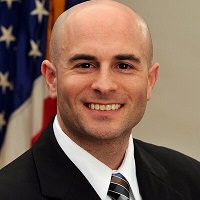
 By Don Rucker MD National Coordinator for Health Information Technology and Steven Posnack MS, MHS Deputy National Coordinator for Health Information Technology
By Don Rucker MD National Coordinator for Health Information Technology and Steven Posnack MS, MHS Deputy National Coordinator for Health Information Technology
Twitter:@ONC_HealthIT
Steven’s Twitter: @HealthIT_Policy
National Health IT Week is the perfect time to reflect on our collective success since last year. The health information technology (health IT) landscape has dramatically evolved since the first National Health IT Week in 2006. Most provider offices and hospitals use electronic health records, their patients can now view their medical information online, and we see a new wave coming in the next few years powered by the app economy. This change will give consumers better and more convenient ways to manage their own health and shop for care.
We at the Office of the National Coordinator for Health Information Technology (ONC) have taken significant steps this past year to help patients access their medical records on their smartphone. The most impactful step we took was publishing the proposed rule to implement Title IV of the 21st Century Cures Act. We received more than 2,000 public comments on the proposed rule and expect to finalize the rule later this year.
Other milestones from this past year include:
- Released a second draft of the Trusted Exchange Framework and Common Agreement (TEFCA) for public comment that will help to create a single on-ramp to help with the interoperable flow of health information among health information networks.
- Awarded a cooperative agreement to The Sequoia Project to serve as the Recognized Coordinating Entity (RCE). As the RCE they will help us develop, update, implement, and maintain the Common Agreement, which will create the baseline requirements for health information networks to share electronic health information.
- Continued our standards coordination through efforts like the FHIR at Scale Taskforce (FAST) Initiative and the HL7 Da Vinci Project as well as other industry-led efforts to accelerate HL7® FHIR® adoption.
- Released a draft Strategy for Reducing Regulatory and Administrative Burden Relating to the Use of Health IT and EHRs for public comment with the Centers for Medicare & Medicaid Services.
- Released the 4th annual update of the Interoperability Standards Advisory (ISA), ONC’s process to coordinate the identification, assessment, and public awareness of interoperability standards and implementation specifications used by the healthcare industry to address specific interoperability needs.
What’s Ahead
As we look to 2020, there are a few things on our to-do list, including:
- Issuing a final strategy and recommendations on ways to reduce health IT-related burden on clinicians;
- Continuing our work with the Recognized Coordinating Entity to issue a final first version of the Common Agreement;
- Working with the HHS Office for Civil Rights (OCR) and industry partners to see that patients have the tools to access and share their own electronic health information with any individuals or apps they choose;
- Investing our time, energy, and resources with the health IT community to see secure, standards-based APIs become more widely deployed to support patient access as well as population services; and
- Advancing the expansion of the U.S. Core Data for Interoperability (USCDI).
The Future Requires Coordination
Many of our milestones from this past year are due to the support, input, and feedback we received from stakeholders across the healthcare and health IT community. But more work needs to be done before we truly can experience the promises of the 21st Century and the ability of the computers we wear on our wrists and carry in our pockets.
Every day we collaborate with healthcare providers, innovators, entrepreneurs, and industry stakeholders as well as federal, state, and local agencies to increase the effectiveness of health IT. We are working towards the goal of ensuring that patients have consumer-friendly access to and control of their healthcare information.
The next 12 months are poised to be busy for all of us. We look forward to the next batch of highlights for National Health IT Week 2020.
This post was originally published on the Health IT Buzz and is syndicated here with permission.
